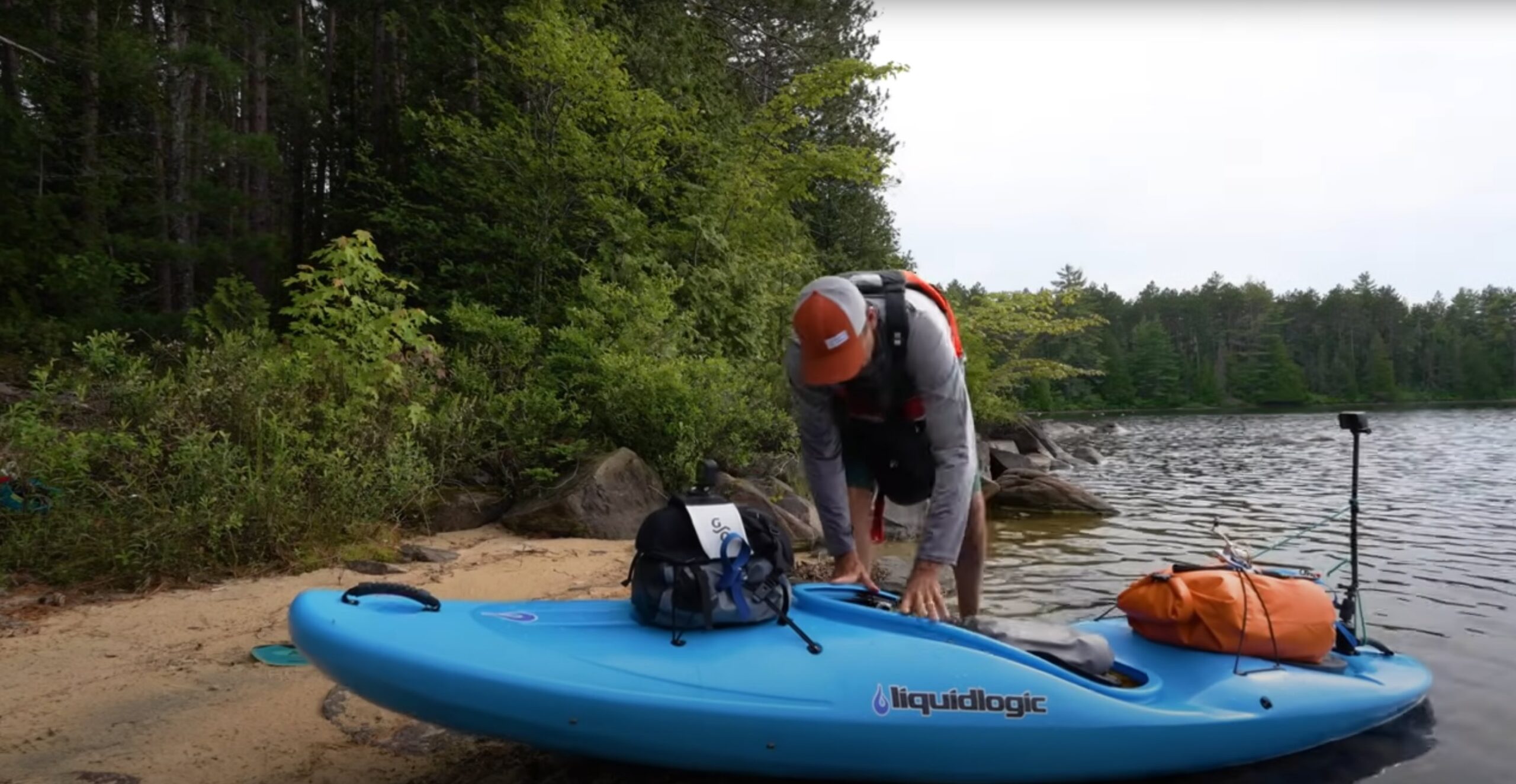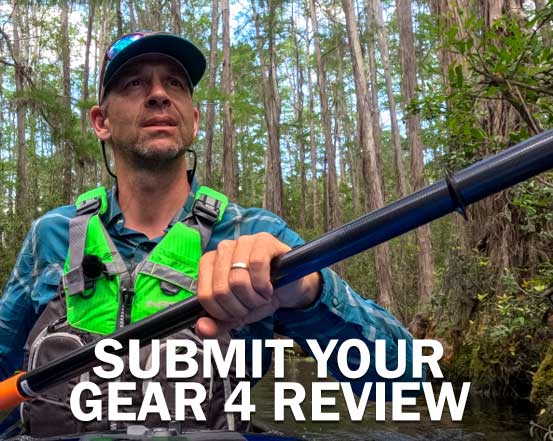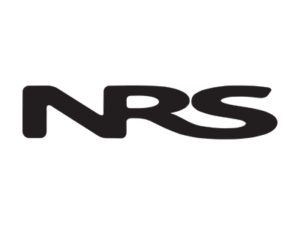Rivers have been a cornerstone of my life for over 35 years. I love everything about them. They can be so peaceful and calming, but they can also be so powerful and dramatic. While no two rivers are alike, they all share a similar magic. They have taught me so much over the years. Paddling a river for the first time is something truly special. You can only do it once. Every bend is a moment of discovery, and every rapid is a puzzle to solve. To experience this feeling again, just as spring turned to summer, I set out alone on a week-long adventure down the Petawawa River in Algonquin Park.
The 90 kilometres (60 mile) section of the Petawawa River has over 50 rapids. As it was still early in the season, I expected interesting weather, plenty of bugs, and not to see anyone else. On a trip like this, you can plan for every eventuality, but you must go into it expecting the unexpected.
The Kayak
Canoes are the boat of choice in Algonquin Park for good reason. They are fast on the flat sections, can carry lots of gear, and can run some of the whitewater. They are also easy to portage.
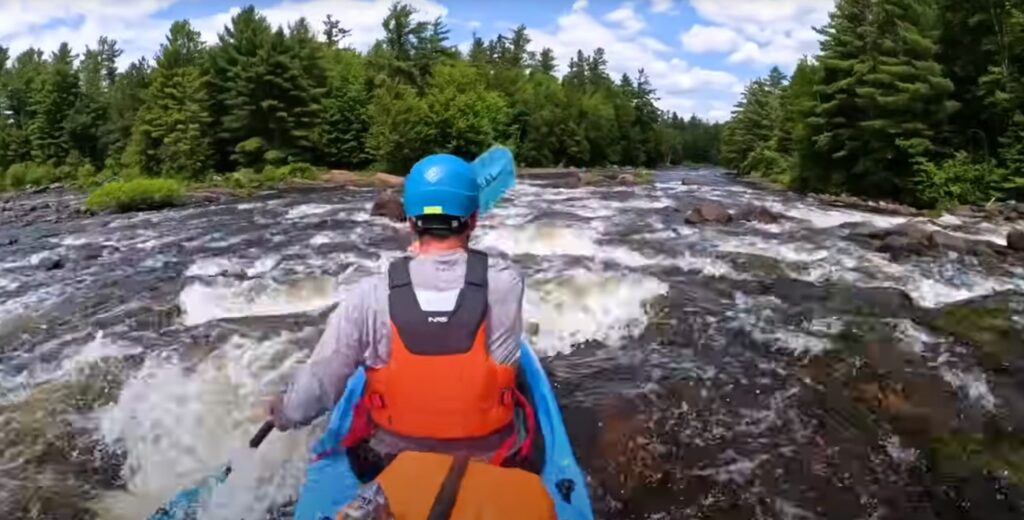
Despite this, I chose to use a kayak. I felt this would allow me to run more rapids and avoid portaging as much as possible. However, I would only be able to take advantage of the kayak and run the rapids if the water level was high enough, something I would only know once I’d started on the adventure.
For this trip, I paddled the Liquid Logic Remix XP10. This is a crossover kayak, meaning it is a whitewater kayak designed specifically to carry gear on multi-day trips. It is wider than a normal whitewater kayak and has a higher weight capacity.
The Liquid Logic Remix XP10 has a bulkhead behind the seat to create a separate compartment for gear. This area is accessible through a big hatch on the stern deck.
As I was out on a week-long trip, my kayak was loaded to the brim on the inside. Therefore, I had dry bags strapped to the top of the kayak to give me extra storage space. The extra weight in the kayak made it less maneuverable, particularly in rapids.

Day 1 – Shuttling and Launching on Cedar Lake
I was driven to a sandy beach on Cedar Lake, the starting point of my adventure, by Mike from Algonquin Portage. Algonquin Portage provides an excellent shuttle service to launch spots throughout the area. This service makes it easy for kayakers to enjoy Algonquin Park.
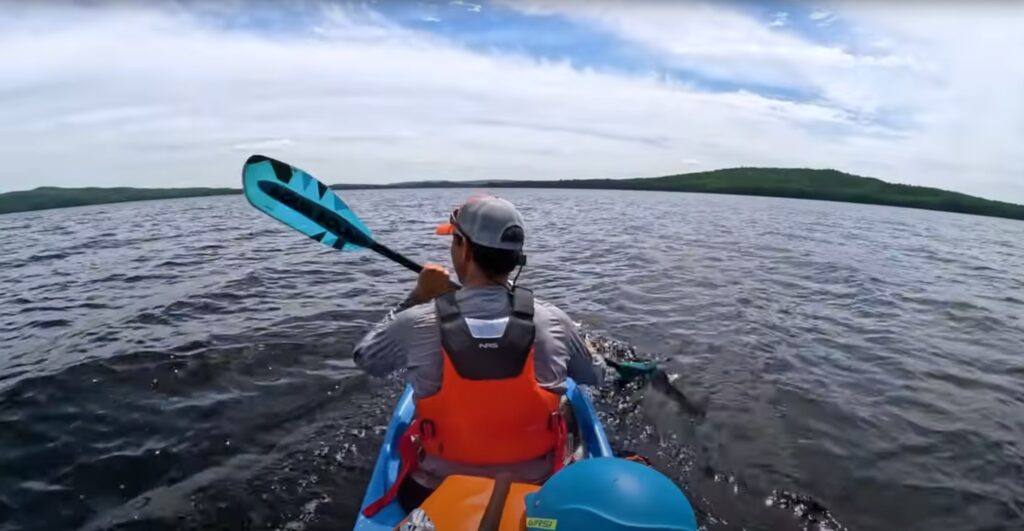
Starting a multi-day solo trip like this gives you mixed emotions. I was feeling a mixture of excitement, anxiety, and freedom. I had seven days to get down the river by myself. The first three days, I would be paddling sections of the river that I had never seen before but had quite a lot of whitewater.
The first part of my journey was across Cedar Lake. I was lucky enough to have a strong tailwind. I was even able to get a little boost from the waves that the wind was creating which felt like a good omen. Part of my decision to launch on this day was due to the wind forecast, as this lake is big enough so that it would be a much bigger challenge if I had to fight a headwind.
The Mouth of the Petawawa River
Arriving at the mouth of the Petawawa River, it was time for the first portage over a dam. After a quick scout, I decided that I didn't actually need to portage – I could run through the dam and the subsequent rapid. Although I did a lot of bumping and scraping on rocks, I successfully made it through.
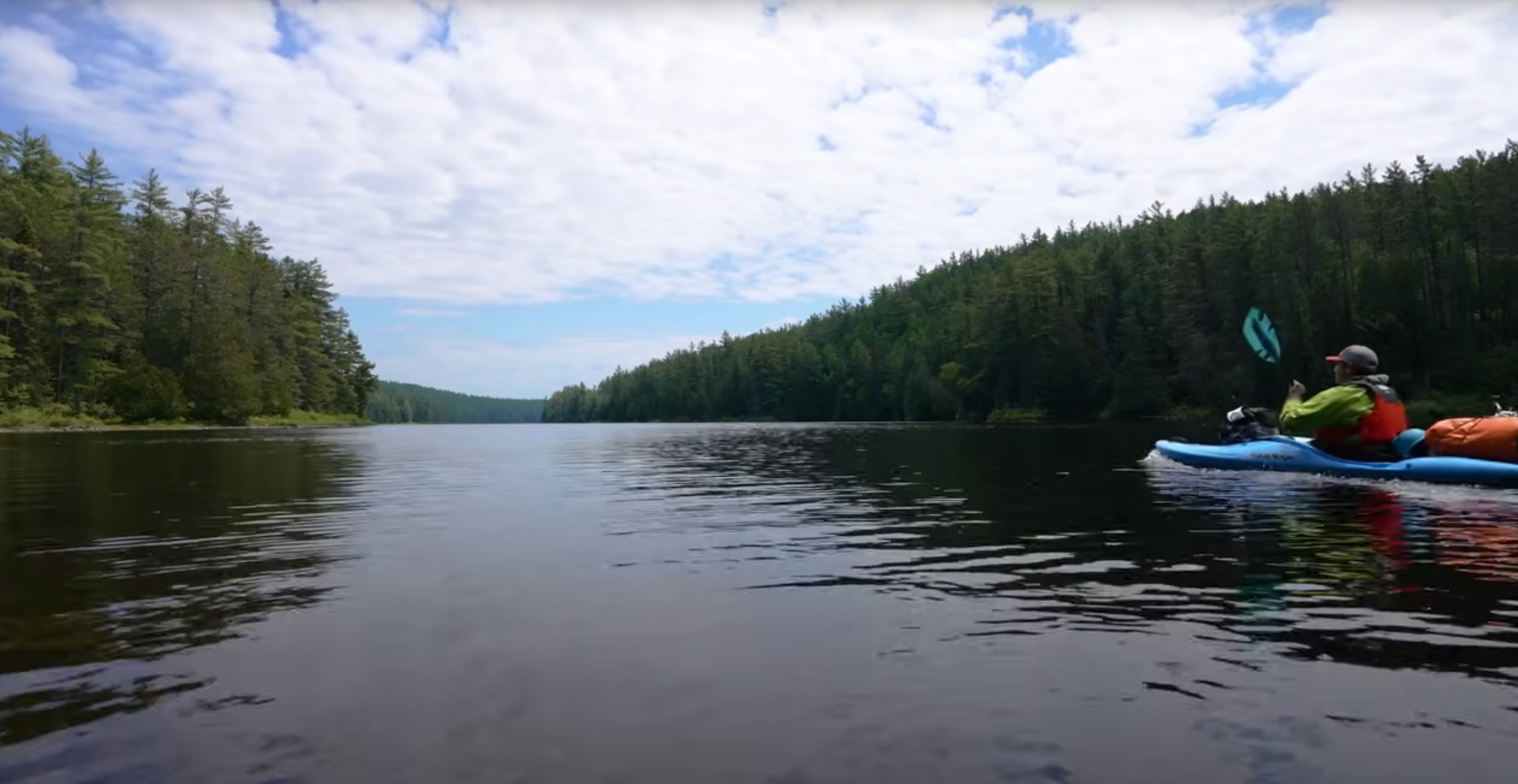
The Importance of the Water Level on the Petawawa River
When planning the trip, I was concerned about the water level. I needed the water to be high enough to allow me to take advantage of the whitewater kayak, and run some rapids that are usually portaged. For that reason, I came on the adventure a little earlier than planned, because we had very little snow over the winter which resulted in lower water levels on the river than were typical.
After running the first rapid, I was encouraged because if I could make it down that first rapid, I should be able to get down many of the other rapids that I would encounter.
One of the great things about planning a trip on the Petawawa River, is that there is an online gauge that shows you the water level each day. https://ottawariver.ca/location/petawawa/ For my trip, the water level was around 23 cubic metres.
The First Campsite

After a good day's paddling, I decided to stop and set up camp next to a fishing hole. I'm not a great angler, but I hoped to catch a walleye for dinner.
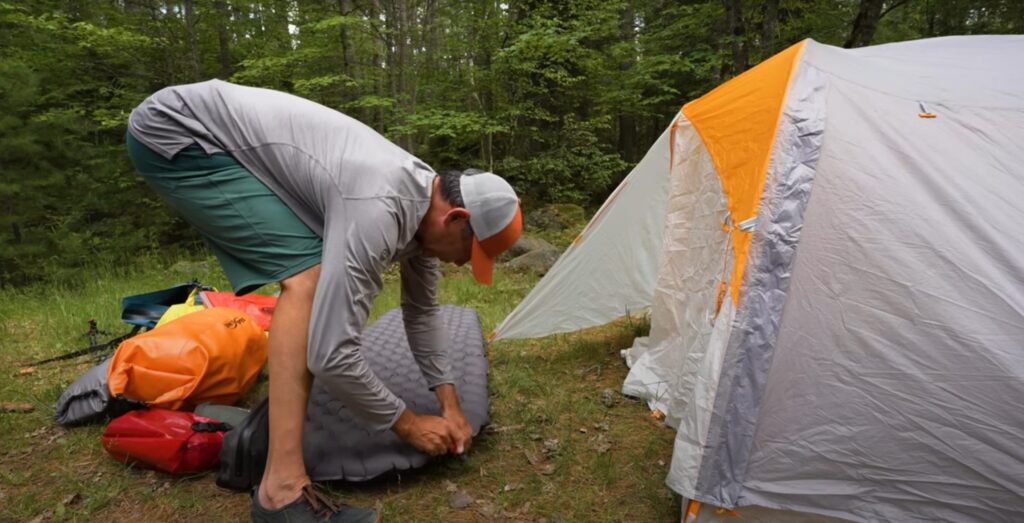
Although I caught many fish, I didn't catch a walleye. I wouldn't go hungry though, as I packed dehydrated meals to last the entire trip. While I often take more than this on camping trips, when you need to fit seven days' worth of gear into a small kayak, there isn't much space for gourmet cuisine!
Kayak Camping Gear
To make camping for 6 nights as comfortable as possible, I used the 25°F complete sleeping system by Zenbivy. The pillow has both a small down insert and an inflatable bladder. It is the most comfortable camping pillow I have ever used. The rest of the sleeping system consists of:

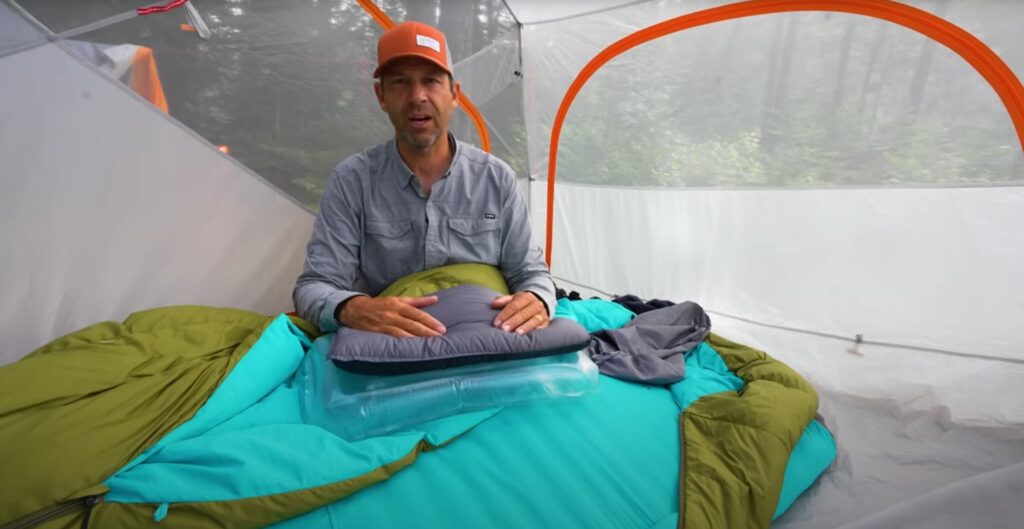
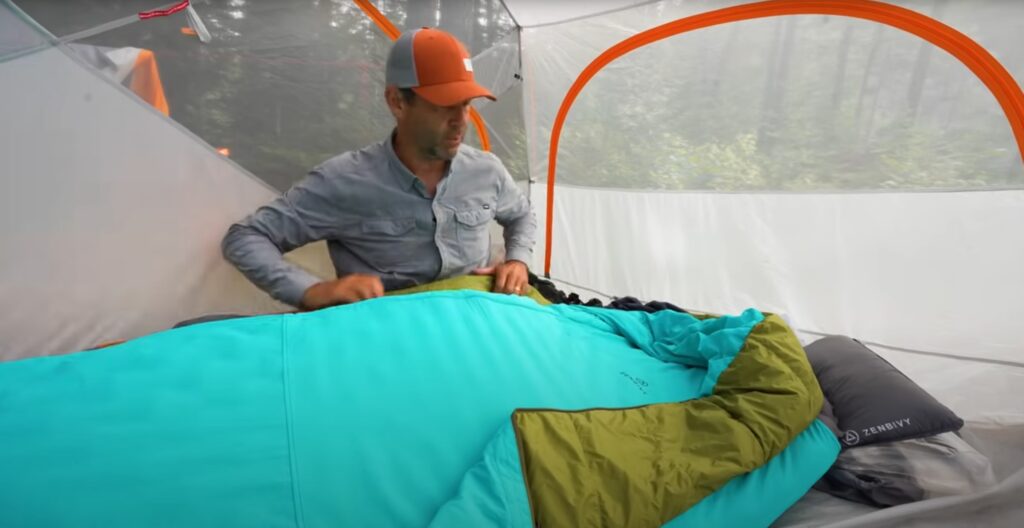

- The ultralight sleeping pad which packs down to a small size but is still nice and thick
- A sleeping bag/quilt that straps onto the sleeping pad and provides endless sleeping configurations.
Day 2 on the Upper Petawawa River
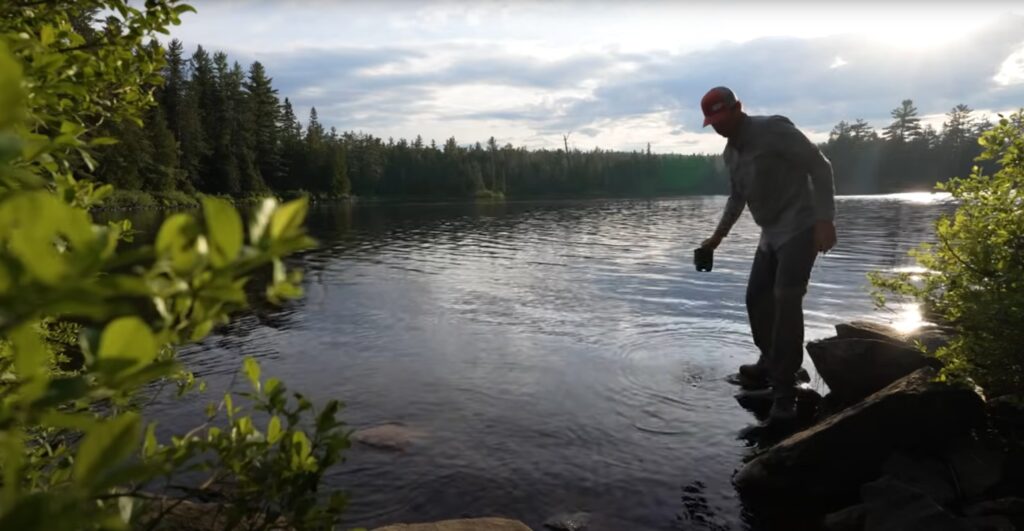
There was no real hurry to get out on the water this morning. I could enjoy a peaceful coffee while watching the river go by. Breakfast was a little classier than my evening meal. I used dehydrated eggs, bacon, and cheese to make myself a tasty and filling breakfast sandwich. After breakfast, it was time to get back on the water for a long day with plenty of rapids to negotiate.
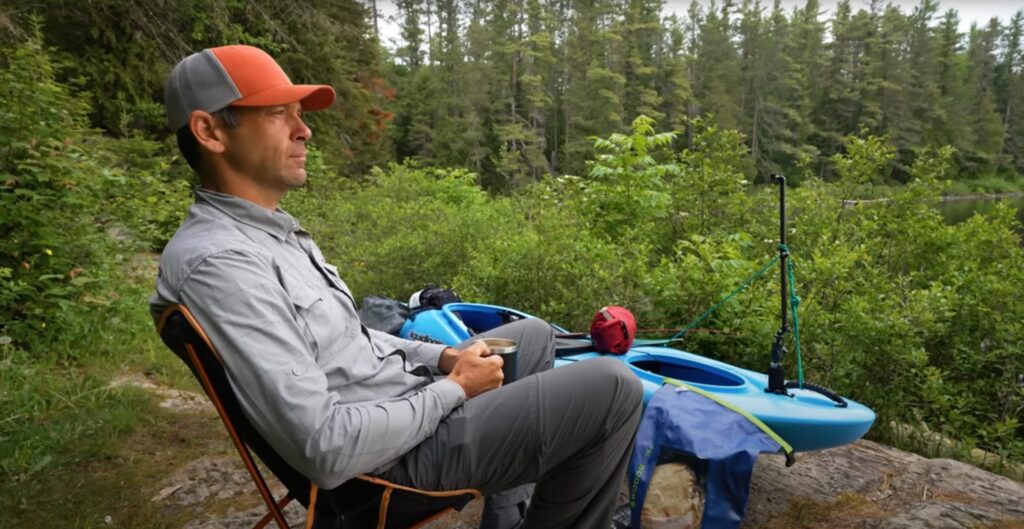
Devil's Chute Rapids
The forecast did not call for rain. But, by the time I got to the bridge marking the Devil's Chute Rapids, it was raining a lot. After the bridge, the river spreads into different channels, separated by islands, before landing you at Devil's Chute.
My kayak paddles very differently with a full load, and this would be the biggest rapid I had taken this boat down fully-loaded. But after a thorough scout of the channel from multiple angles, I was confident I could run it and keep the gear in the boat. Devil's Chute reassured me that the water levels were adequate for the whitewater ahead.
Shortly after Devil's Chute, I did manage to lose a brand-new Go-Pro with footage from the first 36 hours of my trip. But that is the nature of using cameras in whitewater rapids.
Radiant Lake
From the Devil's Chute, there was another 3 kilometers (2 miles) of flat water kayaking before popping out onto Radiant Lake. It takes roughly 6 kilometers (4 miles) to cross the entire lake. The crossing was uneventful, but I spotted some beautiful camping spots around the lake. It is definitely one to come back and explore further on a future trip. This time, however, I wanted to get back to the river channel and running rapids
Campsite Two – Francis Lake
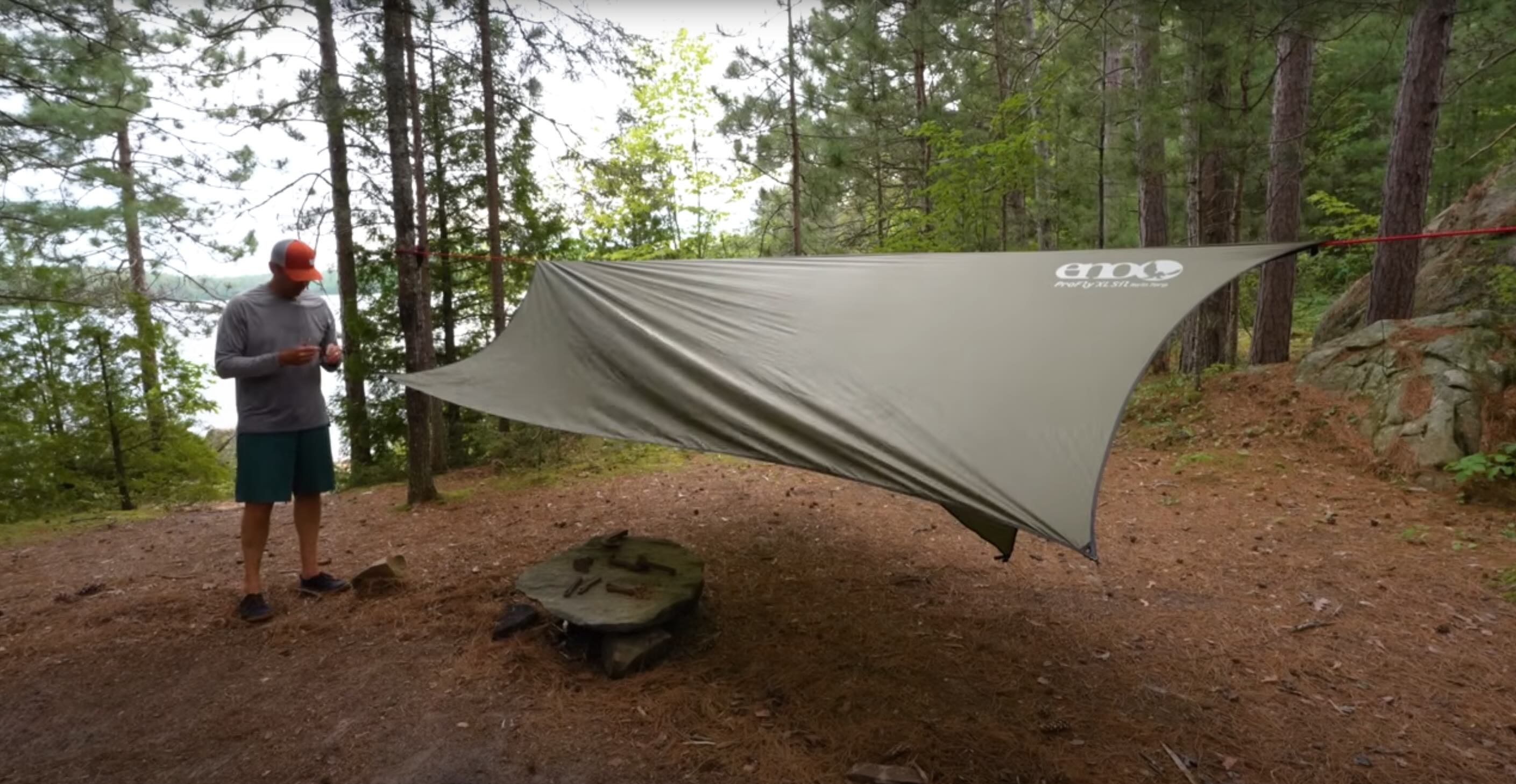
After running a number of fun Class 1 and 2 rapids after crossing Radiant Lake, ominous skies made me decide to spend the night, as planned, on the banks of Francis Lake. With the imminent threat of rain, I hurriedly set up the camp. Sure enough, minutes after getting the tarp up the skies opened and it started to pour with rain.
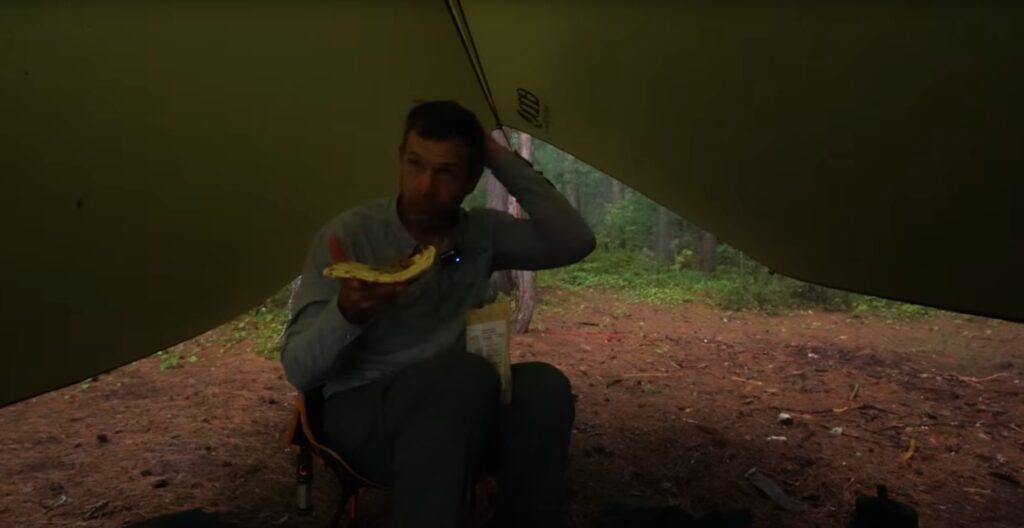
Using my trusted Zoleo, I checked the weather forecast and learned that the storm would soon pass. My hope is that it would raise the water levels and give me a higher chance to run rapids over the next few days.
Special Thanks
Special thanks to my long time partners NRS and Aqua Bound for supporting my mission to get more people on the water and ensure those experiences are as great as possible, and to Ontario Creates for supporting my Wild Discovery adventures.




